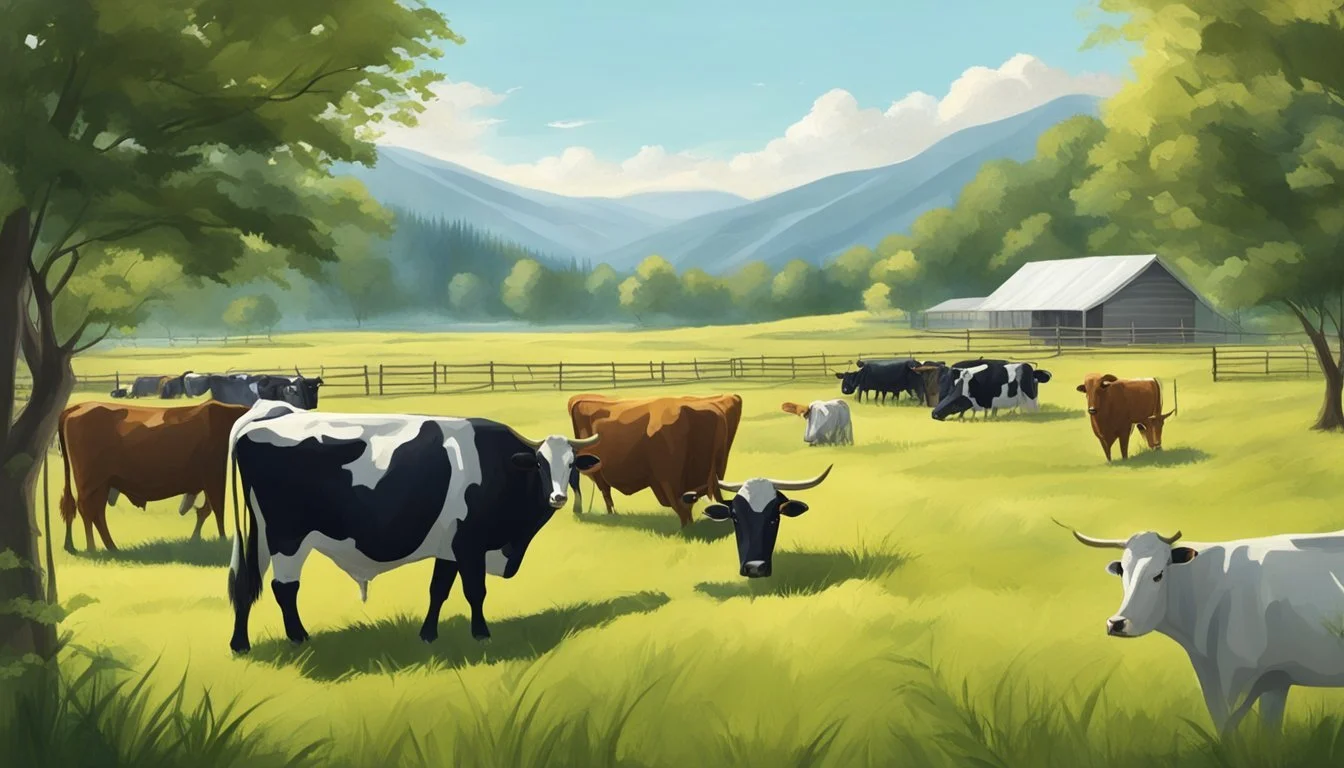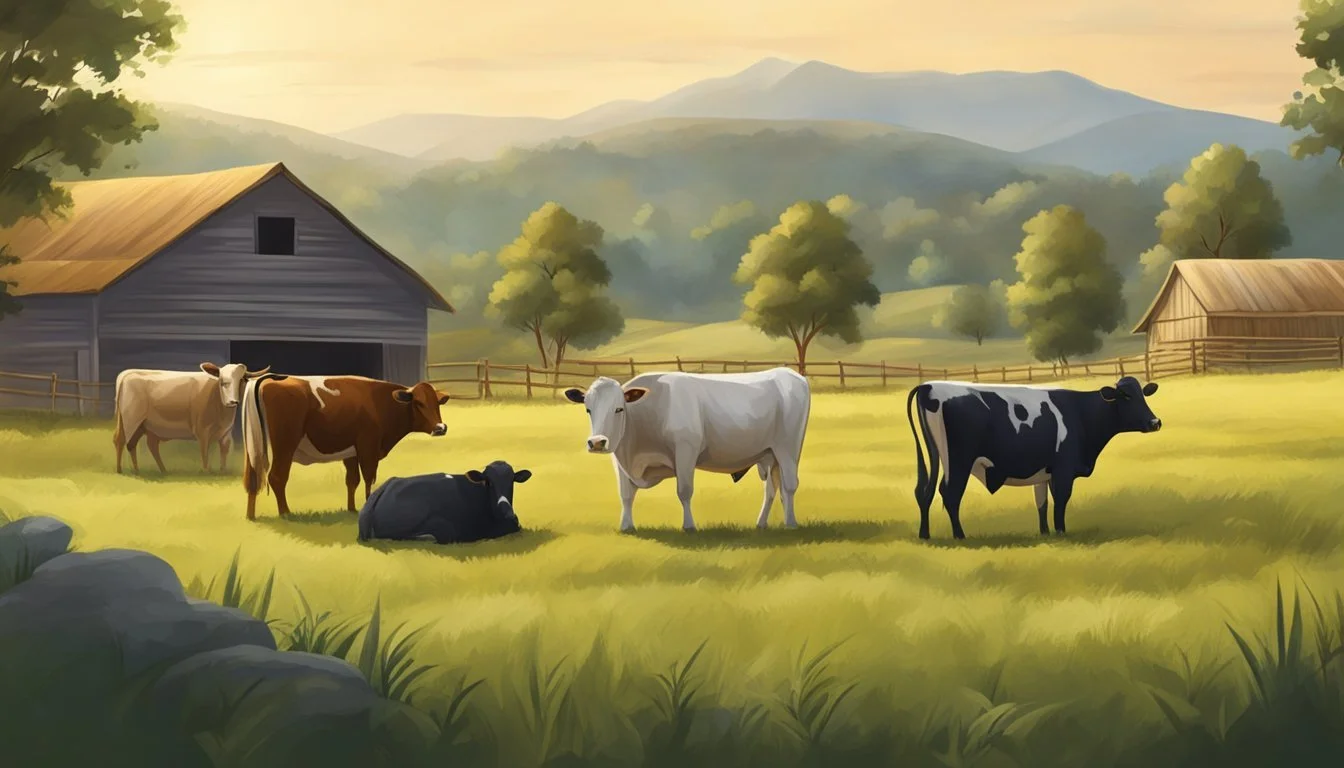How do I Ensure Animal Welfare and Humane Treatment in Cattle Farming Practices?
Ensuring the welfare and humane treatment of cattle is a critical responsibility for farmers and those involved in livestock management. It involves a combination of proper nutrition, health care, environment, and handling practices. Maintaining high standards for animal well-being not only supports the ethical treatment of animals but also improves the quality of products produced from cattle, such as meat and dairy. Effective animal welfare practices are guided by scientific knowledge and ethical principles that dictate animals should live free from hunger, distress, and disease, and be allowed to express natural behaviors.
To achieve these welfare standards, it is essential to provide cattle with balanced diets, regular access to clean water, and appropriate medical care to prevent and treat diseases. This approach is reinforced by guidelines set forth by the Beef Quality Assurance Program, which emphasize the importance of disease prevention and veterinary care. Furthermore, good cattle management involves designing facilities that minimize stress and injury, and training handlers to interact with the animals in a calm and gentle manner. These practices are all aimed at safeguarding the physical and psychological health of the cattle.
In addition to on-farm practices, humane treatment extends to the transport and slaughter process, overseen by regulations such as the Humane Slaughter Act of 1958. These regulations ensure that animals are handled with care and that slaughter processes are carried out with as little pain and distress as possible. By adhering to established humane handling guidelines, the industry strives to maintain standards that respect the welfare of cattle throughout their lives.
Understanding Animal Welfare
Animal welfare is a comprehensive term that reflects how well an individual animal is coping with the conditions in which it lives. This section explores the core aspects of animal welfare in the context of cattle, emphasizing their health, well-being, and quality of life.
Defining Animal Welfare
Animal welfare pertains to the physical health, emotional well-being, and the expression of natural behaviors in animals, especially those under human care. It strives to ensure cattle live fulfilling lives, with a focus on minimization of discomfort and enhancement of positive experiences. There exists a growing recognition that animals are sentient beings capable of feeling and emotions, which means their quality of life is not solely dependent on survival but also on their psychological state.
The Importance of Treating Cattle Humanely
Treating cattle humanely is crucial for their welfare and is ultimately reflected in their quality of life. Humane treatment encompasses adequate nutrition, shelter, healthcare, and comfort, as well as the freedom to engage in innate behaviors essential to their well-being. Ensuring such conditions not only abides by ethical standards but also has practical implications, like improved productivity and better quality products for consumers.
Animal Welfare vs. Animal Rights
While related, animal welfare and animal rights are distinct concepts. Animal rights advocates argue for the rights of animals to live free from human exploitation and harm, effectively assigning intrinsic rights similar to humans. Conversely, animal welfare finds its foundations on the belief that while humans can use animals, there is a responsibility to provide a high standard of care and humane treatment. This difference in viewpoints shapes how cattle are managed in various agricultural settings.
Regulations and Standards
In the United States, the treatment of cattle is subject to various legislation and regulations that ensure their welfare. These laws mandate the humane handling of livestock and are complemented by certification programs and audits that uphold high welfare standards.
Legislation Impacting Cattle Welfare
Legislation provides the foundation for animal welfare standards in the cattle industry. Key legislation includes the Animal Welfare Act and the Humane Methods of Slaughter Act, each addressing different aspects of cattle treatment from farm to slaughterhouse.
Humane Methods of Slaughter Act
The Humane Methods of Slaughter Act specifically mandates the proper treatment of livestock during slaughter, requiring that animals be rendered insensible to pain before being slaughtered. This Act is a critical component of federal regulations to ensure the humane end of life for cattle.
Animal Welfare Act
The Animal Welfare Act sets the minimum standards of care and treatment for animals used in research and exhibition. However, it does not specifically cover livestock used for food production. Compliance with this Act is monitored and enforced by the USDA through regular animal welfare audits.
Certification Programs and Audits
Certification programs, such as Animal Welfare Approved, provide a way for cattle producers to demonstrate their commitment to high welfare standards. These programs typically involve regular audits to verify that producers meet specific requirements for animal health and welfare.
Best Practices in Animal Welfare Management
Ensuring the welfare of cattle involves systematic attention to their living conditions, health, feeding, and treatment during handling and transportation. This comprehensive approach supports both the ethical treatment of animals and the quality of the animal products derived from them.
Providing Adequate Living Conditions
Cattle require appropriate housing to protect them from extreme weather and ensure their comfort. Facilities should offer ample space to move, rest and exhibit natural behaviors. Management of these living conditions is pivotal, including:
Shelter: Well-ventilated but draft-free structures with protection from elements.
Space: Sufficient area to avoid overcrowding, allowing cattle to lie down and stand up comfortably.
Bedding: Regularly replaced to maintain dryness and comfort.
Nutrition and Health Management
Optimal nutrition and rigorous health control programs are foundations of cattle welfare. This encompasses:
Diet: Balanced feed that meets nutritional needs, providing freedom from hunger and thirst.
Veterinary Care: Regular check-ups and prompt treatment of illness and injury.
Preventive Measures: Vaccination programs and parasite control to prevent diseases.
Handling and Transportation Standards
The humane handling and transportation of cattle are critical to avoid stress and injury. Key practices include:
Training: Personnel must be knowledgeable in low-stress handling techniques.
Facilities: Design of ramps, chutes, and pens must minimize the risk of injury.
Transport: Vehicles should provide adequate space, ventilation, and minimize time in confinement.
By adhering to these practices, farmers and cattle handlers can ensure the well-being of their livestock throughout their lives.
Facilities and Housing
Ensuring welfare and humane treatment of cattle begins with the design and setup of housing and facilities. Proper housing systems are critical for the health, comfort, and well-being of the animals.
Designing Humane Housing Systems
When constructing or modifying facilities for cattle, it is imperative to consider their natural behavior. Housing systems should provide ample space for cattle to move freely and lie down, access to clean water, and protection from extreme weather. Regular maintenance of the facilities is crucial to prevent injuries and diseases.
The Problem with Crates and Cages
Confinement in crates and cages can significantly restrict cattle's natural movements. This form of housing is inadvisable as it can lead to health complications and stress. It is preferable to provide environments that allow cattle to exhibit natural behaviors rather than confining them to small, restrictive spaces.
Pens and Larger Living Spaces
Providing cattle with pens and larger living spaces is more conducive to their welfare. Such environments should be designed to minimize stress and aggression between animals. The layout must include features like non-slip flooring and sufficient space for feeding to encourage healthy herd dynamics and enhance overall animal welfare.
Ethical Production and Sourcing
Adherence to ethical production methods and careful sourcing are vital in ensuring the welfare of cattle in meat and dairy industries. By focusing on sustainability and humane procedures, producers can ensure high welfare standards from farm to table.
Sustainable Meat and Dairy Production
Sustainability in meat and dairy production begins with the adoption of practices that prioritize animal welfare while minimizing environmental impact. Key considerations include providing ample space, proper nutrition, and veterinary care to promote the happiness and healthiness of cattle. The USDA ARS highlights the importance of early detection of illness, which can lead to more effective treatments and lessen animal suffering.
Sustainable Practices:
Rotational grazing: Ensures grass regenerates and soil health is maintained.
Manure management: Reduces methane emissions and improves soil quality.
Renewable energy sources: Lowers the carbon footprint of production facilities.
Purchasing from Humane Sources
When sourcing meat and dairy products, grocers and consumers should opt for suppliers that are transparent about their farming practices. Ensuring that cattle have been raised in conditions that meet the five freedoms of animal welfare is essential. Purchasers can look for certifications indicating humane treatment, such as those detailed by organizations like the Humane Society, to guide their buying decisions.
Checklist for Humane Sourcing:
Animal Welfare Certifications: Look for labels indicating adherence to welfare standards.
Supplier Transparency: Choose suppliers who provide clear information about how animals are raised.
Support for Small-scale Farms: These often follow more humane practices due to lower production pressures.
By integrating ethical practices in production and making discerning choices in sourcing, the food chain remains responsible and considerate of animal welfare. This conscientious approach promotes a more sustainable consumption of animal products and reflects a significant shift towards humane treatment within the industry.
Improving Animal Welfare Beyond the Farm
Ensuring the welfare of cattle extends beyond on-farm practices into the realms of consumer influence and legal frameworks. These external forces can drive significant improvements in the well-being of animals throughout their lives.
Consumer Advocacy and Education
Consumers wield considerable power to effect change in animal welfare practices. Through informed purchasing decisions, they can prioritize products from operations that maintain high welfare standards. Organizations like the ASPCA highlight issues within industrial farming systems, encouraging public support of more humane practices. Education efforts, such as explaining the benefits of pasture-raised cattle, can motivate consumers to choose welfare-friendly products, thereby incentivizing farmers to adopt better practices.
Legislation and Enforcement
Robust legislation is crucial in setting and maintaining welfare standards beyond the farm gate. Welfare legislation not only defines minimum standards but also influences industry practice by mandating what is required of cattle producers. Strict enforcement ensures that all parties comply with these standards, creating a level playing field and supporting the wellbeing of the animals. This combination of policy and oversight helps maintain an ethical approach to animal management across the sector.







